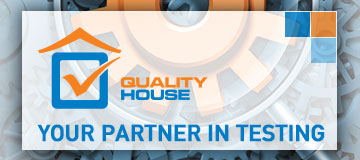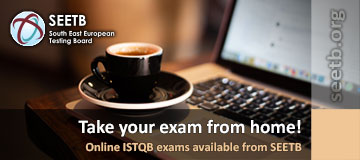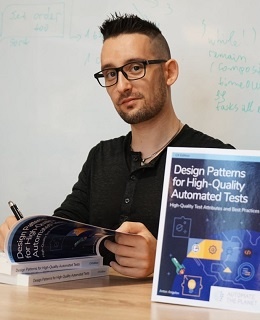
Anton Angelov
Automate the Planet, BulgariaAnton Angelov is CTO and Co-founder of Automate The Planet, inventor of BELLATRIX Test Automation Framework, and MEISSA Distributed Test Runner. Anton has 10 years of experience in the field of automated testing. He designs and writes scalable test automation solutions and tools. He consults and trains companies regarding their automated testing efforts. Part of his job is to lead a team of passionate engineers helping companies succeed with their test automation using the company’s BELLATRIX tooling.
He is most famous for his blogging at Automate The Planet and many other conference talks.
Become Black Ops QA with Selenium 4 BiDi-DevTools APIs
Anton Angelov will explain in many details and code examples how to automate hard-to-test web app functionalities using Selenium 4 BiDirectional and Chrome DevTools APIs. We will discuss test automation of progressive web applications, web sockets, memory leak checks. In addition, you will learn how to perform internationalization, localization, and network performance testing. Finally, we will investigate how you can use the protocols to speed up your tests using the black hole proxy pattern.
Outcomes:
• learn selenium 4 new features
• learn chrome devtools and BiDi APIs Selenium 4
• learn how to automate PWA specifics with Selenium 4
• learn about internationalization, localization and network performance testing
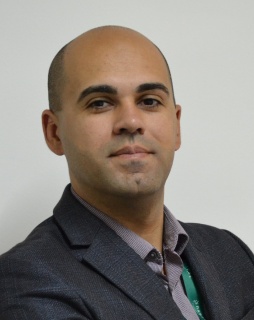
Gjore Zaharchev
Seavus, North MacedoniaGjore Zaharchev is an Agile Evangelist and Heuristic Testing fighter with more than 15 years of experience in Automated, Manual, and also Performance Software Testing for various domains and clients. In this period Gjore has lead and managed QA people and QA teams from different locations in Europe and the USA and different team sizes. He recognizes testers as people with various problem-solving skills and an engineering mindset and believes that Software Testers are more than mere numbers to clients. Currently working at Seavus, with an official title of a Quality Assurance Line Manager responsible for the Software Testing Team. Also, he is an active speaker at several conferences and events in Europe and Testing Coach at SEDC Software Academy in Skopje.
Since 2020 he is SEETB (an ISTQB) board member for Macedonia.
The dark side of Test Automation
The first question that we need to ask ourselves is how to know that our tests are really automated? Are these just a bunch of scripts that don't do the basic job or our test has the potential to mature?
A lot of effort is invested in automated testing but very often this effort is not paid off. We need a better strategy we need a better approach and clear criteria of what we need to achieve.
In my presentation, I am giving an answer and a few directions on how to achieve real automation. I will talk about several basic principles:
1. Assertions
2. Test Data
3. Reports
4. Execution frequency
5. Code Maintenance
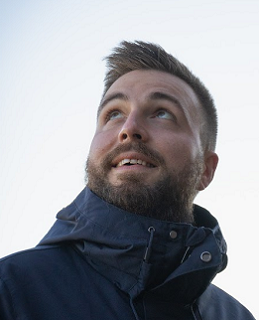
Andrei Danilov
Typeform, SpainCurrently Engineering Manager of a software development team at Typeform, Andrei has developed his passion for Quality from his experiences in the early days of his career as a QA Engineer, which later on enabled a successful experience as a Fullstack Engineer. Through the use of data and metrics he has been impactful in a wide number of projects, which made him pursue his MsC in Artificial Intelligence.
Outside of work, Andrei enjoys electronic music, sports and culinary experiences.
Predicting Software Quality with Machine Learning
In order to better support the planning and direction of an Engineering department, it is useful not only to have information about the present and the past, but also to make inferences about the future. The session gives an overview of a tool used to measure engineering standards and how, based on the data generated by it, classical Machine Learning techniques, and modern data and ML tools a company was able to take meaningful decisions that impacted Quality.
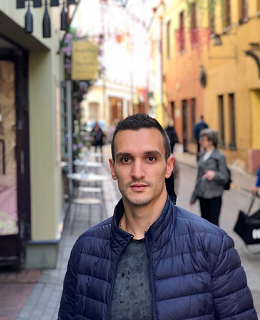
Dimitar Todorov
Alcatraz AI, BulgariaDimitar has been testing software for more than 10 years now, working on various projects and products. He is currently working at Alcatraz AI as a Team Lead, QA engineering. He has knowledge and experience in most of the aspects of software testing, his latest responsibilities includes building a high octane team of strong engineers and managing delivery of world class quality products. He is an advanced level ISTQB certified professional and working on biometric AI solutions is his latest adventure.
For him, working in a fast growing community in the field of AI and ML technologies is really exciting, challenging and last but not least - a lot of fun. Dimitar shares that he is a ski lover and a hobby traveler - he likes crossing borders and visiting different sea resorts, as well as tasting local food and beer.
Testing AI powered Biometric Access Control
For too long, physical security has forced organizations to choose between traditional technologies that keep environments safe but sacrifice movement, and modernized options that keep workers moving but limit security. Our vision at Alcatraz is to eliminate this tradeoff, through a solution that delivers on both fronts, and is cost-effective for organizations, actionable for managers, and intuitive for users. We have designed the Alcatraz platform to work in the most secure spaces and deliver the most frictionless experience. AlcatrazAI's Rock is revolutionizing the way people enter secure spaces by leveraging the unique power of the human face. The Rock is a device which uses AI and ML algorithms to make decisions on the edge and control the access using biometric data. Testing such an innovative product is a challenge in many aspects.
In this session you will learn how we managed to lead the quality in building a competitive solution and bring this world class product on the market.
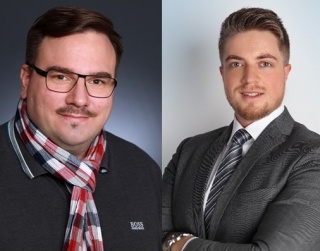
Benedikt Wörner & Alexander Ganster
Munich Re, msg systems, GermanyBen has been working in the field of test and quality management for more then 16 years. For many years, he managed test teams in various industries and shared his knowledge as a coach in different training courses. Today, Ben works as Head of Global Testing at Munich Re. He’s defining new ways and perspectives for the company, and one of these is to implement an exploratory testing approach in a regulated environment. His passion is working together with the projects and identifying best practices. Only together are we able to achieve great things.
Alexander Ganster has gained extensive experience in SW testing in many different project contexts and has now been working as a consultant at msg systems in the Test Consultancy Munich department for more than three years. In this role, he supports major customers in their digital transformation so that their test and quality management processes meet the high demands for speed, performance and security in modern software development lifecycles.
The SAFe way of testing: Session-based End-to-End testing
We take several medical devices, combine them with an Azure cloud application and connect other front-end applications (mobile, client). A complex system landscape is complete. We have this construct developed worldwide (USA, India, Hungary, Germany) in several teams.
There are many challenges in this setting. In addition to e.g. different time zones and cultures, there are many other aspects.
In my presentation, we will show you where we come from, then we will present the current status, explain our vision and take a look at the challenges that still lie ahead.
This includes topics such as a brief overview of SAFe, how we implement our end-to-end test via session-based testing and which responsibilities lie where (system team vs. product development team). Last but not least, we'll show how we have integrated this into Azure DevOps procedurally.
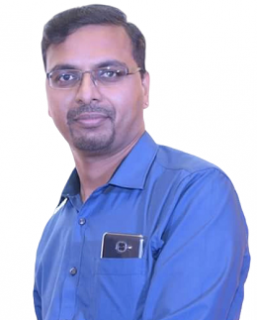
Praveenkumar Prem
Wipro Digital, SwitzerlandPraveen is a digital enthusiast, strategist & implementer - a true practitioner. As a Switzerland Sector Head - Agile & DevSecOps Practice, Wipro Digital, Praveen helps business realize value embracing Digital. He currently supports a leading Swiss Banking client to embrace digital & agility, helping the clients make things that matter most to their end users and ensuring the engagement is a fun. His areas of interest include applied innovation and application of Data Analytics, DevOps, AI in Digital Assurance & Quality Engineering.
He is a technology leader specializing in driving adoption of Continuous Agile Delivery at scale using SAFe, DAD, Scrum@Scale involving emerging technologies like AI, DevOps & QE practices.
Over his 21 year's career, Praveen has gained a wealth of experience by "failing, learning, growing, and succeeding" in many roles, including Software Product Engineering & Management, Software Testing, Agile & DevOps Coaching, and Organizational Change.
Praveen is ICAgile Certified Professional – Agile Coach (ICP-ACC), Certified Scrum Master, Certified SAFe® Agilist, Azure Cloud Certified Solution Architect & Azure DevOps Certified. He has supported multiple conferences as volunteer, and a frequent speaker at International conferences.
Why security in DevSecOps is No.1 challenge?
The sudden wave of change in the application development methodologies have created a crisis with application security. The changes caused by Digital Transformation on business, have rendered the legacy waterfall methodology irrelevant into a speed driven DevSecOps world.
In the Traditional waterfall methodology, everything was predictable with quarterly/monthly/yearly releases. This allowed specialized independent security teams to embed application security. But with Agile development practices, changes to an application happens on a daily/weekly or even multiple times a day within a Sprint. Of course, agile brings many business benefits. Agile promises to improve the customer experience - especially mobile based apps. Applications help with automating processes for quicker results. But practicing agile to achieve these benefits increases risk of introducing new vulnerabilities or complicating earlier ones. The potential fallout of risky applications is a disaster for business. Hence the response from IT teams must be fast. Since the way application development has faced rapid changes, it’s more important to clarify the new requirements for DevSecOps for application security and roles must be clearly defined. Developers are not going to be solely responsible for security breaches. CIOs to security managers to security testers must involve in the new integrated DevSecOps framework.

Dimitri Zhelkov
Scalefocus, North MacedoniaDimitri Zhelkov is a Quality Assurance Engineer at Scalefocus. With automation at the centre, his passion for the profession comes from his strive for excellence and efficiency. Due to his belief that everyone has a little tester in themselves, he also loves nurturing future talents.
The seemingly insignificant events that end up defining our lives as well as the cheerful times spent with friends and colleagues, inspire Dimitri's story writing, a hobby he enjoys outside of his working hours.
Mindset of a contemporary QA Engineer
With the fast moving pace of the IT industry, maybe it is time to take a moment and learn from the disciplines around us. Join me as we explore the interplay between DevOps and QA and talk a little about a new culture on the rise: the QaOps.
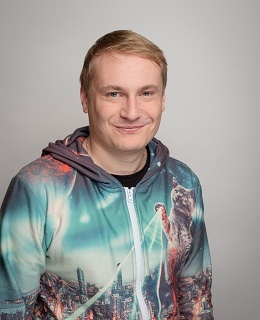
Dawid Pacia
DocPlanner, PolandDawid is Test Automation Manager, QA Lead, Trainer Testing and Python, Public Speaker and Lecturer. He is 1/3 QA, 1/3 Python, 1/3 Lead. Tech freak following all the newest technologies (and implementing them on his own). Fan of the Agile approach to project management and products.
He is leading and supporting the best and the happiest QA team! Actively speaking (and traveling) around the world (combining both passions). He is the organizer and originator of the first regular Ukrainian QA meetup, “UkrainQA.”
Dawid likes coffee with people, good food and drinks, new technologies, discworldWorld, sharing knowledge, Agile Approach, improvements everywhere.
When start-up meets quality... A short story of QA game changer
“Third time lucky” - you can’t just face exactly the same problem again joining the new company, can you? The only problem is…this rule doesn’t apply to the start-up environment.
I’ve worked for three different start-ups so far, always getting on board with a clear mission in mind - to increase the value of the product by building a proper quality mindset and culture within the whole organization. The companies differed in almost every aspect: industry, structure, maturity, business approach and technological advancement. The one and only thing in common always was… a single tester clicking for a few years already until me making an appearance there! During that time, the companies were growing and scaling up. Unfortunately, this change did not include the area of quality assurance. A gateway to disaster…
Fortunately, at some point, a red flag was spotted which led to a simple but powerful conclusion: “Oh no! We need to increase our quality asap!”. And here my story begins…
At first, it always looks like “mission impossible” - too many misleading hints, several unexpected traps, and a laser maze full of bugs ahead of you. But if you take a thoughtful jump and give yourself time, you can transform productive chaos into a quality-driven environment - in other words, make the impossible, possible!
Undoubtedly, there are two paramount goals to be addressed at the company level:
• to increase the quality of the product,
• to build a quality culture across the organization.
Yet, before you even start, there is step 0 - finding the answer to the basic question: “WHY did all of this happen?”. Is it because of chaotic scaling up? Monetization priority? Lack of time/people? Obviously, you will have to build your own team (whatever it is, centralized or distributed one). It’s inseparably connected with the recruitment and personal development process. How to find the right people and let them grow in such a dynamic and changing environment?
I want to share with you mistakes made, lessons learned and solutions implemented, in a nutshell - my story of becoming a change agent of Quality Assurance.
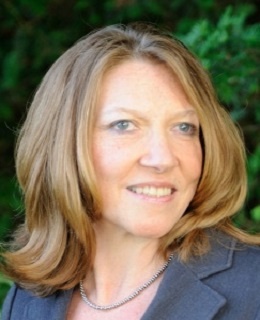
Gerie Owen
ZS Medullan, USAGerie Owen is a Quality Engineering Architect at Medullan. She is a Certified Scrum Master, Conference Presenter and Author on technology and testing topics. She enjoys mentoring new QA Leads and brings a cohesive team approach to testing. Gerie is the author of many articles on technology including Agile and DevOps topics. She recently developed a curriculum for DevOps 101 training. Gerie chooses her presentation topics based on her experiences in technology, what she has learned from them and what she would like to do to improve them.
The Tester of The Future
The very nature of testing is undergoing radical and continual change. Testers need to be aware of these dramatic shifts and prepare to redefine their careers. The testing profession has evolved to meet the challenges of agile development, increasing levels of test automation, DevOps and quality engineering. We are shifting both left and right, and yet we are only in the early stages of a profound transformation in testing skills and the roles testers will play in delivering quality software.
Testers ask what knowledge and skills are needed to have a successful career in an era where testing means many different things. In this presentation, I’ll look at current trends and make educated analyses of what the future of testing and test activities may look like.
I’ll discuss how the testing profession has responded to the dramatic shifts in the software development lifecycle and provide testers with an approach to prepare for the future. I’ll describe the “T” shaped skill assessment theory and show testers how to evaluate their skills, strengths and weaknesses and determine their next direction.
Finally, I’ll introduce the concept of the “Flexible Generalist” and show you can become a tester of the future.
Takeaways:
1.Attendees will understand how the role of the tester has evolved and how testers met the challenges of those changes.
2.Learn what skillsets and mindsets will be important to the tester of the future
3.How to prepare ourselves to become the testers of the future
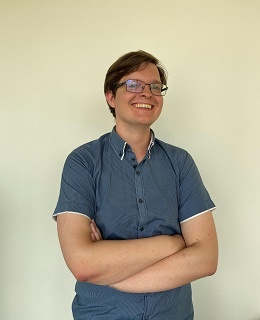
Almantas Karpavičius
TransUnion Baltics, LithuaniaAlmantas Karpavičius is a passionate software developer on his way to mastering software craftsmanship. A teacher and a mentor.
He has been programming professionally for over 5 years. For almost 3 years he has been teaching programming for free, on twitch.tv. Almantas has founded a C# programmers community (C# Inn) where we help each other out and collaborate. It has over 6000 members. He has created 2 C# boot camps for anyone interested in the subject. Part-time Java teacher.
He likes talking about software design, clean code, architecture and testing. Passionate about Agile and liberating structures. An advocate of BDD.
BDD: It's more than just acceptance tests
Most people use gherkin as a human-readable programming language to create tests. They think that BDD (Behavior Driven Development) is the same as tests in feature files. Though gherkin in itself is useful, it's just a small part of BDD.
This presentation will go through 3 pillars of BDD (Behavior Driven Development):
1. Discovery - how to refine user stories using examples
2. Formulation - how to convert examples into documentation and test scenarios
3. Automation - how to write glue code and automate the scenarios
The goal of this presentation is to show BDD in full colour highlighting its use in collaboration with the whole development team to create flawless documentation and bugs-free software.
Based on a real project, with code and many contrasting (good/bad, common mistakes) examples. Using .NET 6, Selenium and Specflow.
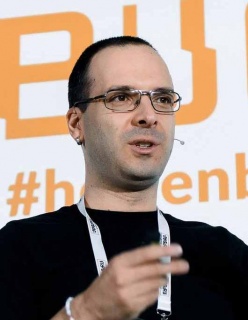
Alex Todorov
Kiwi TCMS, BulgariaAlex is a senior QA engineer and open source hacker with 15+ years of experience. He loves everything open source, public speaking, cooking with wine and riding fast motorcycles!
Alex is the current maintainer of pylint-django and the project lead behind Kiwi TCMS - an open source test case management platform.
Testing with Python for fun & profit
This presentation will walk through the anatomy of test automation frameworks in Python and demonstrate the most popular ones.
• Function[al] based testing with Pytest
• Class based testing with unittest.TestCase
• Interactive Python examples with Doctest
• Flexible & customizable testing with Nose2
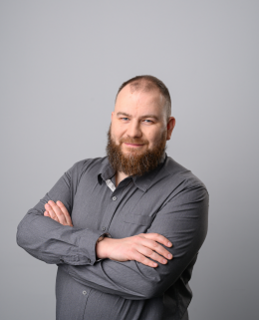
Michal Buczko
Viessmann, PolandMichal is a Quality Manager at Viessmann where he is the advocate for focus on the Quality of Deliveries. He is a fan of fast and efficient testing. Michal gives his insights in design of the test harness and solutions for industrialization projects, the definition of the scope of testing and efficient test reporting. Michal feels responsible for sharing “new-fancy stuff” with others and helping people grow as individuals. He is involved in various activities including quality management, project consulting and requirements analysis. Now sharing his experience as a Quality Management Consultant. In his free time Michal spends time on archery, feeder fishing or enjoying a glass of rum.
7 ways to step up as a leader
We often expect our teams to have great leaders, but not so many of us have the courage and confidence to try it on their own. Some of us feel we lack of the experience to be an effective leader. However each team has to have someone to represent Testers within the organization and we do not always have to wait for a Test Manager or someone else to do it for us.
In this talk with Michal Buczko, based on his personal experience and research done by MIT in US and Toronto University in Canada, will give you 7 ways how to be visible and effective as a leader. He will not only focus on personal attributes, but will show them with practices that are easy to apply on a daily basis.
Michal will encourage you to have the bravery to break rules and disagree when everyone else who agrees, to raise the awareness around testing, lead the project and your team for effective delivery and to adopt unconventional ways of seeing things.
He maintains that within the companies we work for as well as our personal life form early age we are taught to follow rules where we constantly feel how the pressure to fit in rises with the size of organization. However, mindless acceptance to rules rather than questioning them make us feeling stuck and unfulfilled.
Leaders are needed by organizations with passion, drive, curiosity and creativity, which in turn make Testers a perfect match for this role software delivery. Therefor you as a Tester, can help your organization rise to a new level.
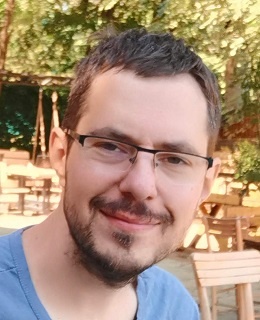
Vojin Popović
Svea Ekonomi AB, SerbiaVojin Popovic is QA Manager at Svea Ekonomi. He started his career on a path to become a developer and he got into QA kind of by accident when a friend of mine convinced me to do a QA internship during a summer break in college. After the 3 week internship he fell in love with QA and the feeling has not change in 15 years.
His second career choice was psychology, psychotherapy to be more precise. He started studding it 7 years ago and have found that the synergy of the two fields is really exciting. Feel free to talk to him regarding QA or Psychology and not to forget his private interests in board gaming, D&D and travel.
Improving Quality using the BAPO model
In today’s IT landscape we tend to favor agile methodologies, independent self-organized teams but we tend to forget that we are still a part of a larger organization that has an effect on our day to day activities even when it comes to testing and quality assurance.
In this lecture we are going to explore a way of setting up and organizing teams based on the business needs first with a specific look at quality assurance. We are going to take a closer look at value stream and quality, specifying quality levels based on business needs, the dependencies of the quality control process on the architecture and the quality level and setting up the QA organization based on the quality control process.
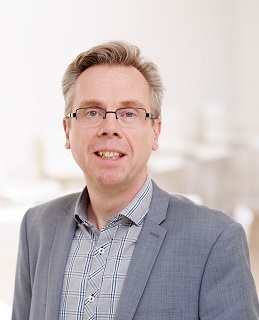
André Verschelling
ALTEN Technology, The NetherlandsAndré Verschelling started his career as tester and software developer, performing several test and development roles at IBM and Sogeti for a/o Océ Technologies, Philips and Vanderlande.
Next to this he developed and deployed test courses and performed Test Process Improvement projects. In 2015 André joined ALTEN NL where he is responsible for the test training curriculum and test competence development in Technical Software development. Besides this, he works as test architect and test manager for companies such as Vanderlande, Lely, Ultimaker, Philips and currently ASML, supporting them in defining and deploying test strategies and processes within their R&D environments.
André is also a board member of BNTQB, the Belgium and Netherlands subsidiary of ISTQB.
Experiences in Risk Management; From Identification to Mitigation
Risk is a very important concept in testing. However, despite all the attention given to it in books, trainings, and the like, it remains a rather abstract concept for most of us.
Applying a Risk-based test approach is often proposed in test plans and/or test strategy documents but such an approach is often limited to identifying risks and determining which parts or components need the most thorough test approach. Mitigating these risks, and especially showing some ‘proof’ of this mitigation turns out to be a more difficult exercise.
In this presentation I want to share my experiences and learnings with risk management from several recent projects. All phases of the process, i.e. identification, analysis and control will be explained with examples and experiences and special attention will be given to the visualization of both the risks themselves and the mitigation actions and results.
With this I want to offer you some ideas to define your own way of dealing with Risk Management and Risk Reporting.
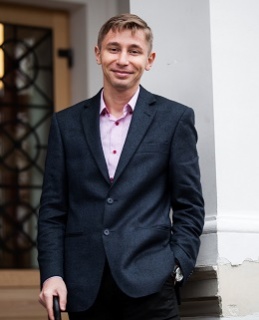
Andrei Vadan
Porsche Engineering, RomaniaAndrei is a quality assurance automation engineer that has more than 9 years of experience. He specialized in mobile apps, has knowledge about web, desktop projects and operating systems.
His experience spans throughout various technology solutions focusing on faster and more reliable testing processes to ease the work efforts for both developers and quality assurance engineers. This comes after working on several projects on different platforms and technologies.
For leisure, he loves to walk in the countryside, travelling and to discover the world’s culture. Other than this he also likes cars and good wine.
Locate, execute, expect design pattern
This article is about Locate Execute Expect design pattern.
In the beginning we will discuss about the purpose of this pattern. We will review the general structure of a classic framework where there is a Page Object Model structure and then we will present the Locate Execute Expect structure. We will show some advantages and disadvantages for both patterns.
After this comparison, we need to see the differences in a real-world scenario, and we will show you a general structure of an automation framework that does not implement a design pattern. After that we will show how the structure looks like when we have the Page Object Model and Locate Execute Expect pattern implemented.
We will try to apply Locate Execute Expect pattern to a project and see how easy is to achieve this. This pattern is very flexible, and it can be used also in combination with Gherkin which is one of the most used behavior-driven development languages.
In the end, we will learn when we should use this pattern and when we should avoid it.
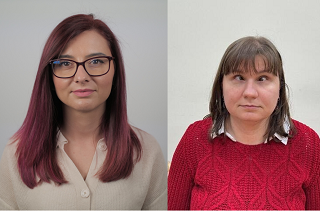
Greta Yamacheva & Rumyana Dimitrova
MentorMate, BulgariaGreta has 10+ years of QA experience. She has worked in functional, regression, Web Services Testing, Hiring, and Agile, and has experience with various testing frameworks. Still, the latest challenge is to lead a course in Accessibility Testing for visually impaired people. She thinks working for this initiative is rewarding.
Rumi has been teaching information technology for 10+ years. While she has congenital blindness, she trains people who have lost their sight later in life and prepares them to use a screen reader for mobile applications and desktops. After attending an Accessibility Testing course, she joined the MentorMate team and worked on projects to determine how accessible they were.
What you see when you are unable to see. Accessibility testing with a screen reader
Greta and Rumyana will tell you about accessibility guidelines (WCAG) 2.1. They will show you the basics of working with NVDA (screen reader) and how this software enables blind or vision impaired people to access different websites. You will learn more about how important is it to evaluate web accessibility on both desktops and mobile.

Ana Palchevska
One-Inside, North MacedoniaАna Palchevska is working as a QA Engineer for 5 years and also a half year helping assistant for Physics at FEIT (Faculty of Electrical Engineering and Information Technology in Skopje).
She is ISTQB Certified Tester. Senior QA Engineer with five years of work experience. Included in all the parts of the QA process from planning to executions, as well as writing reports and give trainings for the clients. She also takes part of many QA events.
Trainee (mentor) to colleagues and enthusiasts in and outside the company I am part from
Her moto: The best advertising is the quality!
STEREOTYPES (tabus, cliché and some problems) in everyday life of a QA and how to resolve them
In everyday life we are hearing and take part of lots of subjects that are stereotypes, tabus and clichés. There is no way to prevent these things, however there is a way to learn about them and to choose how we handle them.
This presentation is going to be just about them - Stereotypes in the QA community.
Will try to give the answers to:
• where we found them;
• how we react on them;
• why they occur;
• is there a possibility to prevent or escape from them;
• and the most important - how and is it possible to resolve them?
Let’s together improve our profession!
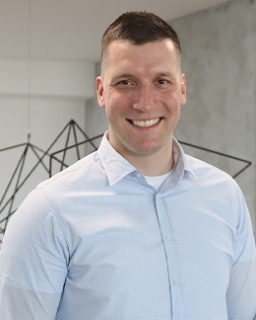
Milovan Poček
Vega IT, SerbiaMilovan Poček is a Technical Principal from VegaIT.
He has more than 7 years experience in testing different solutions. From web, mobile and desktop apps to enterprise systems and IoT solutions. For the past few years he is mostly focused on testing cloud solutions.
Milovan is also a test automation teacher and conference speaker.
Can it function without non-functional?
For modern applications non-functional aspects are as important as functional. Did you know any application that works fine, but is slow and unsecure? Of course not, because no one using those applications.
In this presentation he will share experience of identifying non functional risks and performing automated and manual tests in order to decrees those risks.
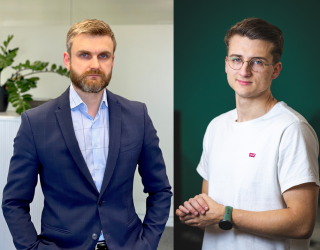
Deniss Ločmelis & Adrians Miņins
TestDevLab, LatviaDeniss is a Technical director of software testing company TestDevLab. Certified ISTQB Advanced Level Technical Test Analyst, Scrum Master. Distributed load and performance test tool architect and lead developer. Proficient in creating full-stack quality characteristic test strategy and consulting in quality assurance best practices on various technical subjects. Strong QA and development team lead skills. Solutions architect at heart. Currently leading R&D initiatives of video and audio quality testing.
Adrians is an Audio and Video Testing Project manager with previous experience as data analysis team lead for multiple projects ensuring data accuracy and quality of video/audio testing. As a Team Lead participated in several data processing and analysis process improvements, before becoming a team lead worked as QA engineer in Audio & Video testing.
Dude, where are my audio and video testing results?
Working remotely has become the standard in modern society, especially with all of the pandemic measures in place. Moreover, in the next upcoming years this trend will continue and strengthen our ways of everyday collaboration.
It's no surprise that video calling apps are at the heart of remote work culture, and this appears to be one of the most intriguing aspects of software testing. So, what are the things that you're supposed to evaluate as a QA engineer when it comes to these video calling apps?
TestDevLab video and audio testing experts will guide the audience through the simplest basics and fundamentals of audio and video quality testing. Collectively, they will outline the reasons for video and audio quality degradation, examine quality evaluation approaches and pin down the key test report metrics to be shared with application stakeholders.

Dusanka Lecic
Levi9 IT Services, SerbiaDusanka is Test Lead and Department Manager in Levi9 IT Services company. In the last six years, she has been actively involved in several different projects, using various technologies and tools daily. She is currently working on a project for the Dutch Everon, which provides infrastructure and software solutions for charging electric cars across Europe, as Test Lead.
She likes to share knowledge and support various initiatives, so she is active in leading an internal expert community that brings together Levi9 experts and testing enthusiasts within both Serbian development centers, Levi9.
She is also dedicated to her academic career as a Ph.D. in Technical Science, so she often writes papers for conferences. She points out current trends and the importance of testing in software development.
How we can manage performance testing?
With some new projects, we hear the word performance testing from time to time. We find some tools, learn how to use them, and start working with them. Is this performance testing? Do we need more understanding about performance testing and how it functions?
At the beginning of my traveling through performance testing, I thought the same. I didn't know how to prepare everything and read the results. I learned more about performance testing and figured out that performance testing isn't just using some particular tool. It is much more than that. How I manage to do the performance test-ing and how to make it effective is the topic for this presentation. I will go through all phases of management of performance testing and show you how to start a good way your job without concern about which tool you will use.
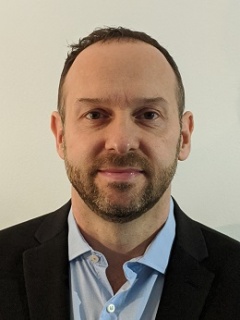
Paul Ewers
Visteon Corporation, BulgariaI am a leader with over 20 years’ experience in the automotive industry and a broad range of knowledge across all the product development disciplines. As Director of European Systems, I aim to improve product delivery by leveraging the synergies between all the systems engineering disciplines (Requirements, Architecture, Integration and Validation), driving best practice from within our organization and across different industries.
The Evolution of Automotive products and our Revolution in Systems Testing
Join us to understand how automotive products are evolving and how is changing our organization, test environment and test approaches.
During the session we will walk through the industry transformation from conventional driver information devices to a smart cockpit assistant in the dynamics of mobility and electrification. We will present you our vision to meet the industry demands:
- System synergy
- Smart test environment
- Adaptable test approaches
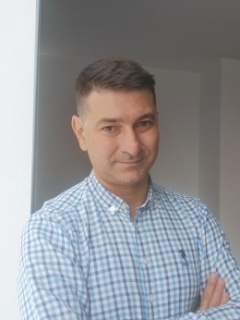
Yancho Yordanov
Visteon Corporation, BulgariaYancho Yordanov is a Technical professional with deep expertise it the domains of Audio analysis, System robustness and its performance indicators. He acquired this experience working as technical expert in numerous driver information and entertainment products for various customers.
His technical interest and professional achievements are in test automation, product risk evaluation with statistical methods and test reusability.
Yancho is part of Visteon company since 2012 and has degree in Electrical Engineering from Technical University of Sofia.
Smart solutions in automotive testing
The increasing product complexity and growing demands of the automotive industry require smart and flexible solutions.
Join us to understand how we ensure the product stability, the proper SW installation and how the standardized approach optimizes the efforts.
During this session we will present our solutions for auto-reflash and robustness testing and the concept of smart control of test execution.
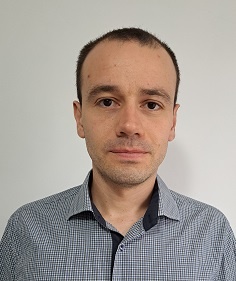
Iliyan Karamishev
Visteon Corporation, BulgariaIliyan Karamishev is a Senior Validation Engineer, responsible for tools research and development. He has over 9 years of experience in the company contributing to projects in various OEMs- from tools deployment to definition of reusable automated frameworks.
In the past 3 years he specialized into areas related to test architecture, automated systems for vision analysis, test code analysis and automated software download. He is author of multiple trainings and process improvement solutions in test infrastructure domain.
Iliyan is graduated in computer systems and technologies from Technical University of Sofia.
Smart solutions in automotive testing
The increasing product complexity and growing demands of the automotive industry require smart and flexible solutions.
Join us to understand how we ensure the product stability, the proper SW installation and how the standardized approach optimizes the efforts.
During this session we will present our solutions for auto-reflash and robustness testing and the concept of smart control of test execution.

